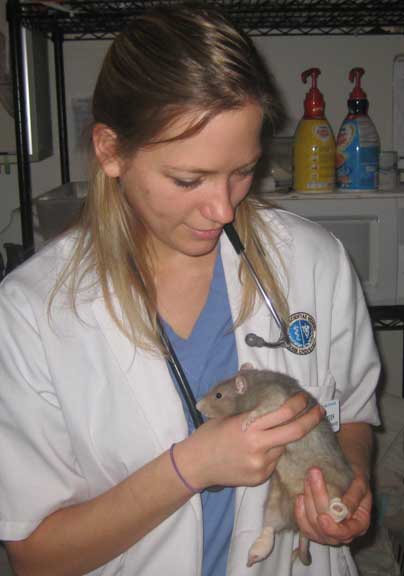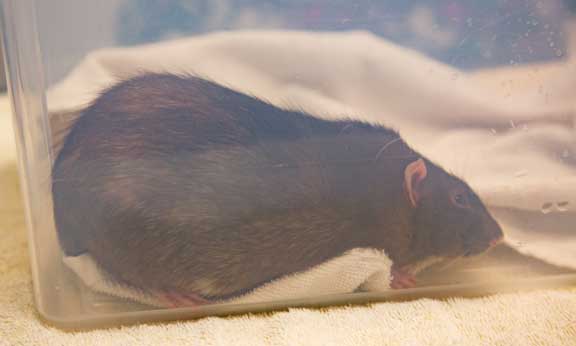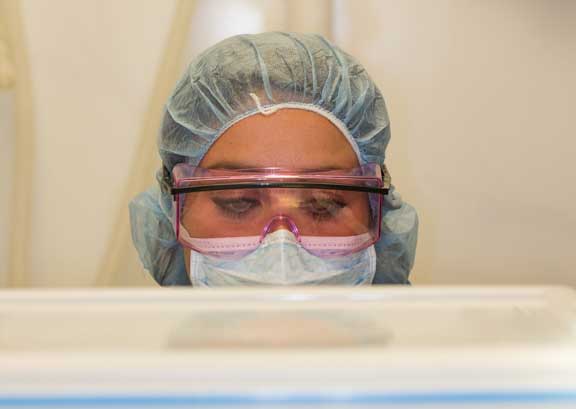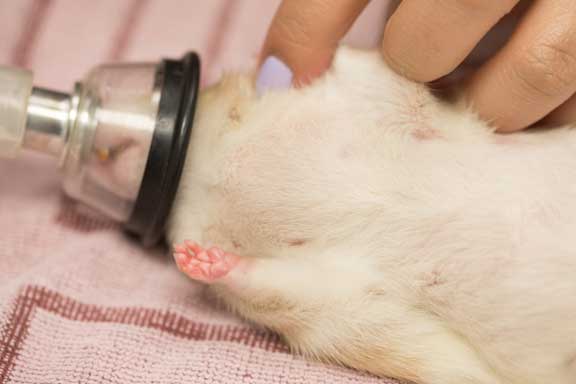Rats are prone to tumors, commonly in the mammary glands and in the uterus. These tumors can be benign or malignant. Removing them as soon as they are noted makes for a much better prognosis. This page has a surgery on the removal of an ovarian tumor.
Anesthesia
All of our rats undergoing surgery get an exam ahead of time. This rat is being examined by one of our student externs.
Once they pass their exam they are put in a special anesthesia chamber with 100% oxygen and gas anesthesia. Over the next few minutes he slowly becomes anesthetized.
They are closely observed the whole time by our nurse anesthetist. Notice her laser glasses.
When our patient is fully anesthetized he is taken out of the chamber and put into a special mask for the duration of the surgery
This area contains graphic pictures of an actual tumor removal performed at the hospital.
Surgery
Our patient that has been prepared for surgery shows an obvious abdominal bulge. The head is towards the left, and it is laying on its back.
An incision is carefully made in the the skin.
The distention in the abdomen from the large tumor causes the muscle layer to bulge out further.
We have to carefully incise this muscle layer without touching the bulging abdominal contents.
A scissors is carefully used to enlarge the incision enabling us to remove the large tumor.
The first organ encountered is the enlarged cancerous ovary. All the nodules are cancerous tissue.
This is the small uterus with the very enlarged and cancerous ovary attached. The cancerous ovary is much larger than the whole uterus. The diagram below helps identify the organs
The blue lines outline the normal uterus, while the green lines circle the huge and cancerous ovary.
The uterus is clamped and the majority of it, including the cancerous ovary, is removed.
The cancerous ovary that has been removed is probably 10x its normal size.
The muscle layer is sewn back together with stainless steel wire, seen here being started on the left. It is very strong and causes minimal tissue reaction. It will stay here for the rest of this pet’s life.
The skin is also sutured with stainless steel. Rats are chewers, so stainless steel is used in the skin also because it is difficult to chew out. The sutures will be removed in 7-10 days.

















